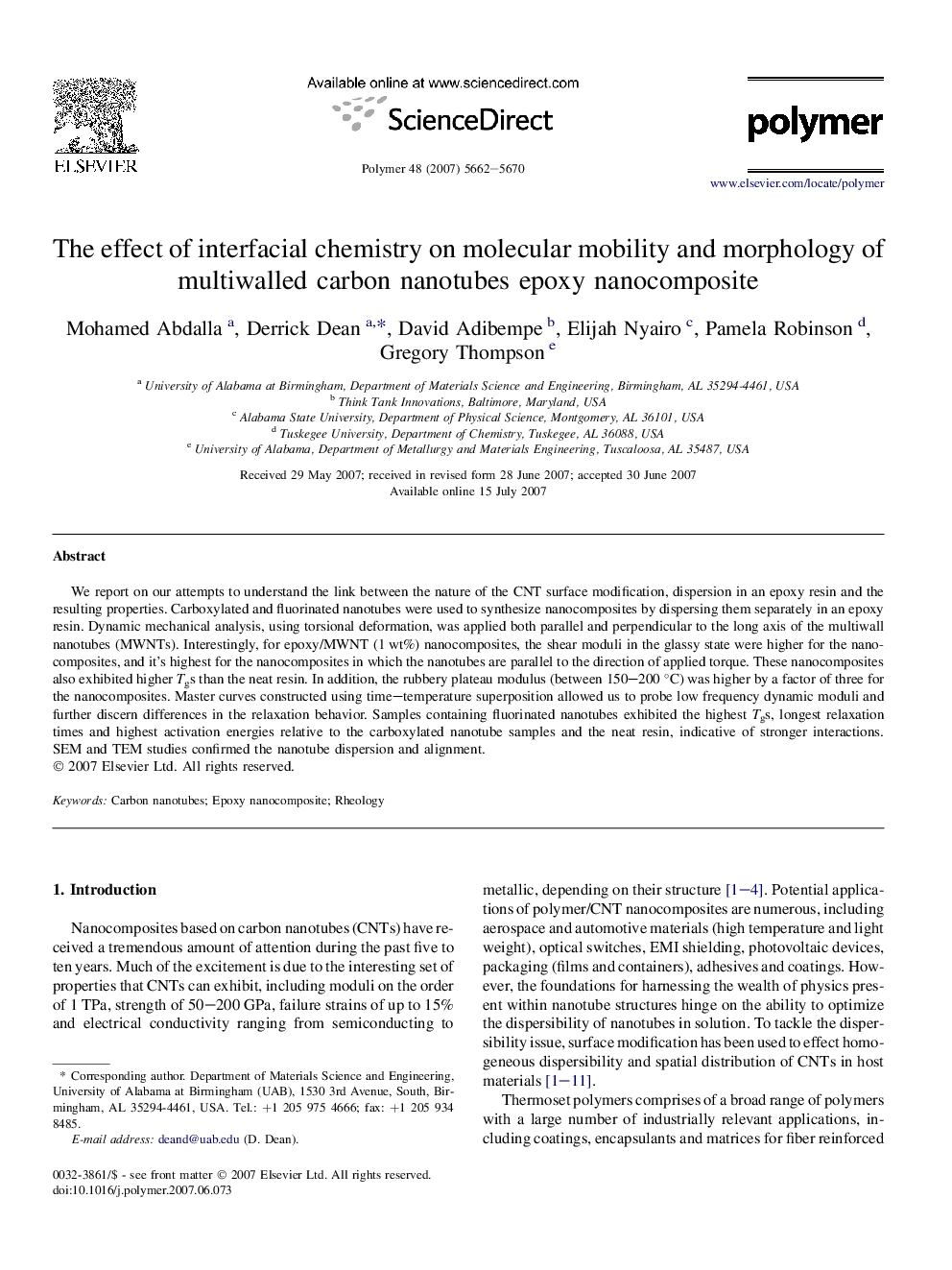| Article ID | Journal | Published Year | Pages | File Type |
|---|---|---|---|---|
| 5189712 | Polymer | 2007 | 9 Pages |
Abstract
We report on our attempts to understand the link between the nature of the CNT surface modification, dispersion in an epoxy resin and the resulting properties. Carboxylated and fluorinated nanotubes were used to synthesize nanocomposites by dispersing them separately in an epoxy resin. Dynamic mechanical analysis, using torsional deformation, was applied both parallel and perpendicular to the long axis of the multiwall nanotubes (MWNTs). Interestingly, for epoxy/MWNT (1 wt%) nanocomposites, the shear moduli in the glassy state were higher for the nanocomposites, and it's highest for the nanocomposites in which the nanotubes are parallel to the direction of applied torque. These nanocomposites also exhibited higher Tgs than the neat resin. In addition, the rubbery plateau modulus (between 150-200 °C) was higher by a factor of three for the nanocomposites. Master curves constructed using time-temperature superposition allowed us to probe low frequency dynamic moduli and further discern differences in the relaxation behavior. Samples containing fluorinated nanotubes exhibited the highest Tgs, longest relaxation times and highest activation energies relative to the carboxylated nanotube samples and the neat resin, indicative of stronger interactions. SEM and TEM studies confirmed the nanotube dispersion and alignment.
Related Topics
Physical Sciences and Engineering
Chemistry
Organic Chemistry
Authors
Mohamed Abdalla, Derrick Dean, David Adibempe, Elijah Nyairo, Pamela Robinson, Gregory Thompson,
